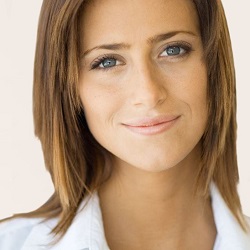
Degenerative Scoliosis, also known as Adult Onset Scoliosis, is a medical condition characterized by the side-to-side curvature of the spine. The curvature itself occurs as the result of the degeneration in the intervertebral discs and the facet joints. These parts are responsible for aiding the proper movement of the spine.
The degeneration, typically, occurs at a gradual scale and the spinal asymmetry becomes more noticeable with age. The causes of Adult Onset Scoliosis are very different from the causes of Standard Adolescent-Onset Scoliosis.
If the condition becomes symptomatic, patients can experience pain that ranges from a mild backache to excruciating pain that travels down to the leg. This pain is called “Sciatica.” It can make walking and general movement very difficult
Causes and Symptoms
There are multiple factors that can lead to degenerative scoliosis.
To begin, undiagnosed adolescent scoliosis is one of the factors. Other than that, the deterioration of the spine is another major factor. You see, the vertebrae are linked by facet joints. When they start to degrade, your spine can end up shifting sideways.
This leads to spinal stenosis, which is the shrinking of the spinal canal. When the space in the canal is reduced due to bone spurs and other abnormalities, it creates pressure on the nerves, which can lead to severe pain in the legs and cause extreme numbness. It can also cause lumbar stenosis, which is a condition that affects the lower vertebrae.
Secondary medical conditions such as Osteoporosis and Osteomalacia can also lead to degenerative scoliosis. In Osteoporosis, your bones start to lose mass, while Osteomalacia is a condition where the bones become soft. Both these conditions can lead to a shift in the spine and eventual curvature.
Surgery is another factor. It has been observed that surgery conducted for other conditions can sometimes cause the development of degenerative scoliosis.
As for symptoms, patients experience intense pain in the morning and evening. This pain may increase with prolonged periods of movement. Sitting down can often help relieve the pain.
Treating Degenerative Scoliosis
If your doctor diagnoses degenerative scoliosis, he will recommend the following:
- Physical therapy, followed by strengthening exercises.
- Medication, such as analgesics, to minimize swelling and pain. Other than that, he may also prescribe NSAIDs (Non-Steroidal Anti-Inflammatory Drugs).
- Injections, such as corticosteroids, may be prescribed by the medical practitioner as numbing or anti-inflammatory agents. The injection is usually delivered directly to the areas with swelling or pain.
- Regulation of physical activity and increased rest will be advised.
- A back brace may be recommended to help alleviate pain.
If the symptoms do not improve, your doctor will consider a range of surgical procedures for the treatment of advanced degenerative scoliosis. This includes procedures such as Posterior Lumbar Interbody Fusion (PLIF), eXtreme Lateral Interbody Fusion (XLIF®), Transforaminal Lumbar Interbody Fusion (TLIF), Anterior Lumbar Interbody Fusion (ALIF), Maximum Access Surgery (MAS®) PLIF, and MAS TLIF.
Contact Our Office
If you have questions about treating degenerative scoliosis, a consultation with Dr. Kevin James can help. Contact Advanced Spine and Orthopedics to schedule yours today!

